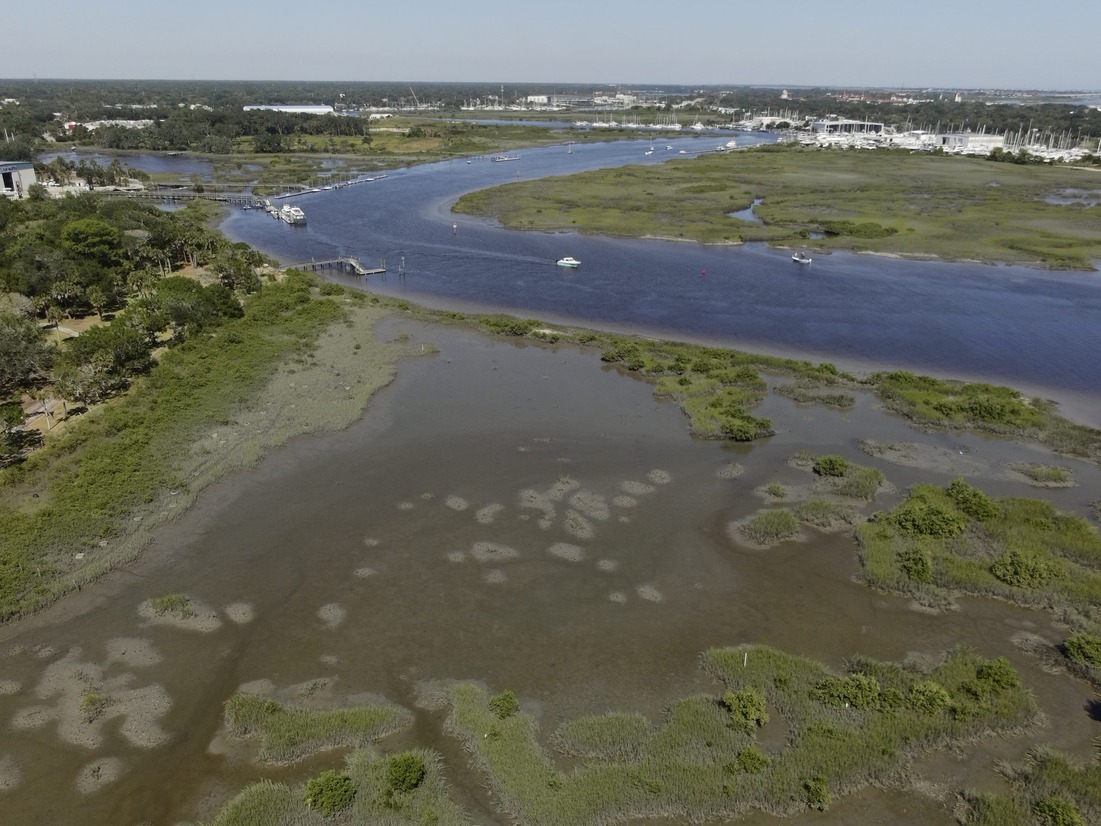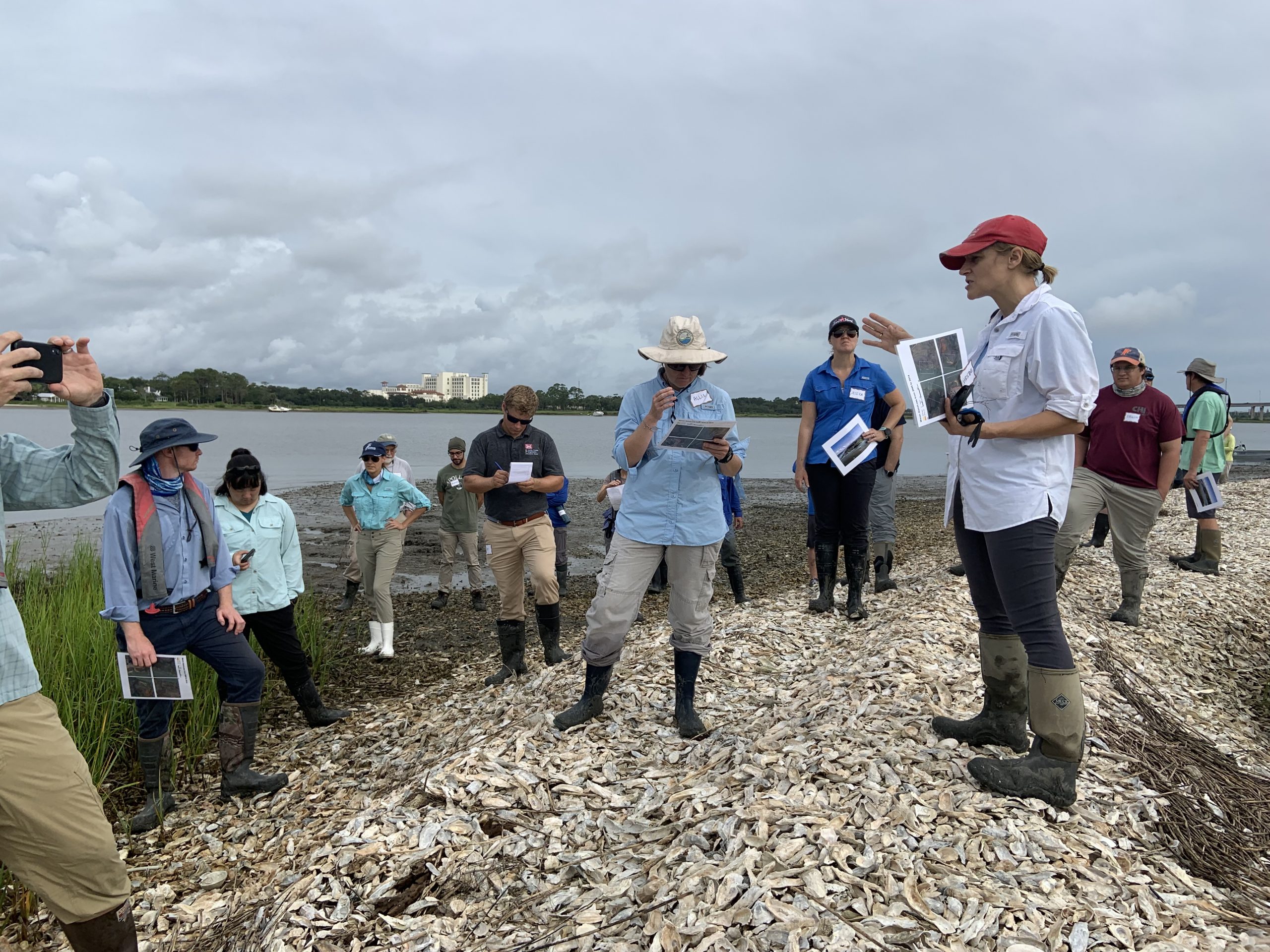In February 2024, the UF Center for Coastal Solutions (CCS) and WSP Environment & Infrastructure Inc. launched a coastal wetland restoration project in St. Augustine using thin-layer placement (TLP) to bolster wetlands’ ability to keep pace with sea level rise and erosion. This approach, which is relatively new to the southeastern United States, involves the application of dredged sediment onto wetlands to increase their size and elevation, which can boost their ability to protect shorelines from storm surge, keep up with sea level rise, store carbon and provide habitat for wildlife.

“There have been prior TLP applications in salt marshes across the Gulf Coast and U.S. Atlantic and Pacific coasts, but this will be the first to our knowledge at the interface of temperate salt marsh and tropical mangrove ecosystem types, which are expanding as temperatures warm and mangroves migrate northward,” said Christine Angelini, Ph.D., CCS director and project lead.
The U.S. Army Corps of Engineers (USACE) maintains thousands of miles of navigation channels adjacent to coastal wetlands by regularly dredging large amounts of sediment from the channels to ensure safe passage for vessels. Some of this sediment will be reused in the thin layer placement project to strengthen coastal wetland and oyster reef resilience. By applying this sediment to nearby wetlands, this can provide multiple benefits including reduced costs of transporting dredged material while also reducing flood risks.
Over the next three years, the CCS team will monitor how the wetlands and oyster reefs in St. Augustine are changing to determine which sites are best for sediment applications — an urgent need because they are quickly eroding. The team will also model how the sediment moves within these ecosystems to understand the complex interactions between the water flow, sediment and vegetation, and predict how marshes would change in response to sea level rise and boat traffic if no restoration takes place. Using data from the models, researchers will then run field experiments to explore how the wetland and reef systems would instead recover and persist with different sediment application designs. This information about the wetland systems will help design the restoration project by determining when, where and how thin layer placement of dredged sediments should be optimally applied.

A parallel collaborative project with the U.S. Army Corps of Engineers (USACE) Engineer Research and Development Center (ERDC) will inform the development of this full-scale project by giving insight into why the coastal wetlands are shrinking and how the vegetation and animals in these ecosystems will respond to different thicknesses and types of sediment application.
To run the field experiments in St. Augustine, Ph.D. students Britney Hay and Adam Hymel will work alongside their advisors Angelini, Andrew Altieri, Ph.D., assistant professor in the environmental engineering sciences department and Safra Altman, Ph.D., a research ecologist with the USACE ERDC.
“Being a CCS student means being closely involved in science that has direct, real-world applications,” said Hymel. “It means being supported by the best and brightest minds. I feel the work I do today will positively impact the future and position me towards a career of success.”
The $1 million project, funded by the National Fish and Wildlife Foundation’s National Coastal Resilience Fund, includes partners from the University of Florida, City of St. Augustine, Florida Inland Navigation District, U.S. Army Corps of Engineers Jacksonville District, Guana Tolomato Matanzas National Estuarine Research Reserve, Florida Department of Environmental Protection and WSP. Stakeholders from coastal resilience, navigation planning and the permitting process will be actively involved throughout the project to ensure project results align with stakeholder needs.
—
By Megan Sam
